WITH LILIANA JÁUREGUI BORDONES
GOLD: A CONSERVATIONIST'S VIEWPOINT
The socio-economic history of South America is closely linked to mining, which has always contributed considerably to the national economy.
In Brazil, this activity has a long tradition, attracting the so-called "garimpeiros" (gold miners) since the 16th century. For them, gold is money in their pockets. For the financial market, it is gold bars in the vaults of central banks. For the tech industry it is valuable device parts and for the luxury industry it is high-value jewellery.
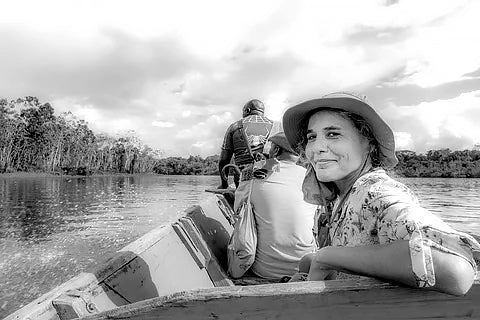
I was born in Chile where we all have a family member or acquaintance who works in the mining sector. This is a historical tradition of which people are proud.
My mother was born in a gold mine settlement and my grandfather was able to raise and educate his children in this way. However, a gold rush has started in the Amazon with devastating consequences since the 1990s. The turning point came when the price of gold rose and big investments in mining paid off.
Artisanal mining transformed into semi-industrial mining where heavy machinery was used, causing serious deforestation and transforming biodiversity-rich primary forests into inert sandbanks. I must confess that I feel uncomfortable using the term Artisanal and Small-Scale Mining (ASM) which provides an almost romantic label for the sector. ASM should involve low investment, local lab or and little or no mechanization.
There are more than 45,000 so-called artisanal gold miners in the most affected areas in Peru. They use at least 3500 pieces of equipment such as motors, boats, large pumps, dump trucks and front loaders.
In a military operation in September this year, an estimated six million euros worth of machinery was destroyed, 255 machines. They often obtain advance financing from unscrupulous gold traders and organizations involved in the illicit drug trade. These facts reveal the true face of ASM in many Amazon territories.
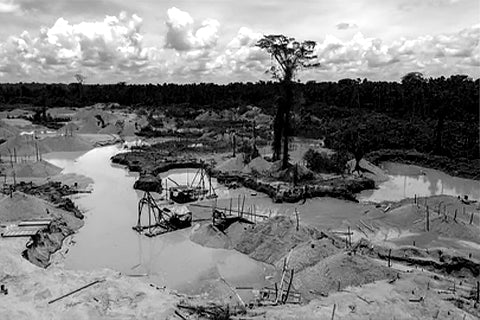
Thousands of people are active in this sector, men miners, women, and children who live in unsafe remote mining villages where the state is absent, deforestation, (child) prostitution and the environment is polluted by a silent killer with a devastating impact: Mercury.
Mercury is an invisible poison that seems to leave no trace and makes gold appear by magic. It binds to the gold particles so that they can be extracted more easily. The compound is then heated so that the mercury evaporates and only the gold remains.
What happens next is the worst part, the mercury evaporates, is carried away by the wind and enters the food chain. Traces of mercury have been found even in jaguar fur.
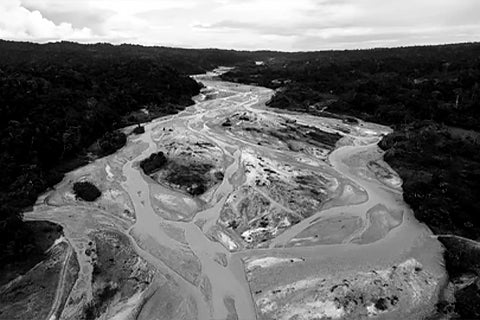
Emblematic species like the jaguar are seeing their habitat reduced.
Jaguars in the forest mean everything is in balance but more conflicts with miners are becoming common. Unfortunately, the use of dogs and guns often ends in the killing of the animal.
Moreover, the official figures for exports per country contain contradictions. In a local study supported by the organization I work for, we found out that what is declared in Peru to the Ministry of Energy and Mines is much less than what customs has accounted for as exports. The gap between these two figures is assumed to be illegal gold.
Another trick is that decreases in gold exports in one country translate into increases in another country, demonstrating the cross-border nature of the phenomenon. According to a Brazilian report, of the 112 tons of gold produced in 2021, at least 7% was illegal and 25% of potentially illegal origin. In the same year, the value of Peru and Colombia's illicit gold exports exceed the value of cocaine exports.
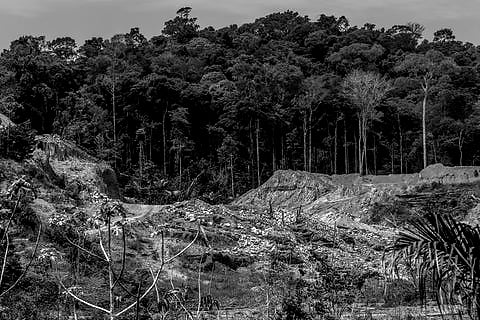
We cannot speak of sustainable mining, but we can come closer to responsible mining.
To do so, we need to work in three dimensions:
1. The environmental dimension is the irreversible destruction of the forest and mercury contamination of rivers, animals and local populations.
2. In the social dimension, the impacts are felt mainly by the miners themselves and their families, in unhealthy living conditions. Women and girls are at risk of abuse.
3. Finally the economic dimension, illegal gold represents a drain on natural wealth.
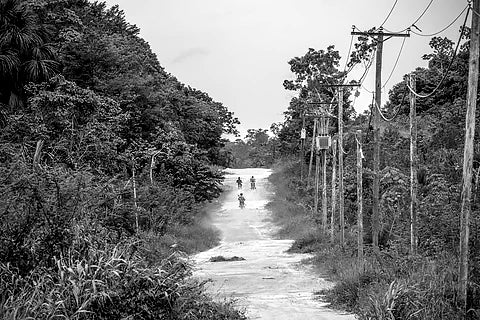
Emerging solutions can be found in areas such as soil restoration, respect for protected areas and indigenous territories, organization of the sector and enforcement of the law, in order to differentiate between legal and illegal mining and combat mercury trafficking.
On the side of the value chain, support strategies that focus on advancing traceability from miner to retail.

Whether you make individual gold pieces, jewellery findings & fittings or use gold as a complement to other materials, you could be creating with SMO Gold.
SMO gold can be supplied to makers & manufacturers directly from the approved LBMA refinery. Alternatively, it can be alloyed into grain, wrought product, rings, chain or castings for delivery to makers & artisans. We offer a comprehensive range of alloys & colours, and can custom make to specific requirements.
